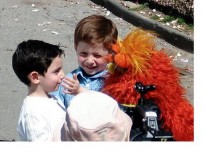David Brooks invented an odd but rather endearing way of thinking about the benefits of studying the humanities in his New York Times column today, which he calls getting in touch with one’s inner beast, “The Big Shaggy.” He argues that college students – whether they’re studying accounting or engineering – need exposure to the arts, literature, history and other “romantic” subjects in order to boost their creativity and help them understand deeper ways of communicating and thinking beyond the superficial realms of Twitter and even journalism.
Brooks wants to discourage the current trend among college students to choose a major, like math, based on the calculation that it will lead to a high-paying job. Instead, he wants students to consider English and history as useful pursuits, too, and argues that studying them might even lead to better career outcomes in the long run. (The College Board tracks trends in college majors and found a spike in English majors during the economic boom earlier in the decade – so perhaps once the economy is up and running again, the humanities will bounce back.)
In part because The Big Shaggy sounds like a Sesame Street character, the column reminded me of the curriculum debate in the younger grades, which was reinvigorated last week with the release of the Common Core State Standards.
Although many education researchers I have spoken with are thrilled about the potential for the increased rigor and quality that the standards may offer, there was also unease that the standards, which include only math and English, might further marginalize “softer” subjects such as art, social studies, and music. Early education researchers and practitioners were particularly concerned about the youngest children, who they worry may get less time working on important, yet somewhat hazier areas like social-emotional development.
Do young children need more Big Shaggy in their lives, or are schools already doing enough to help children discover their “inner beasts”?




